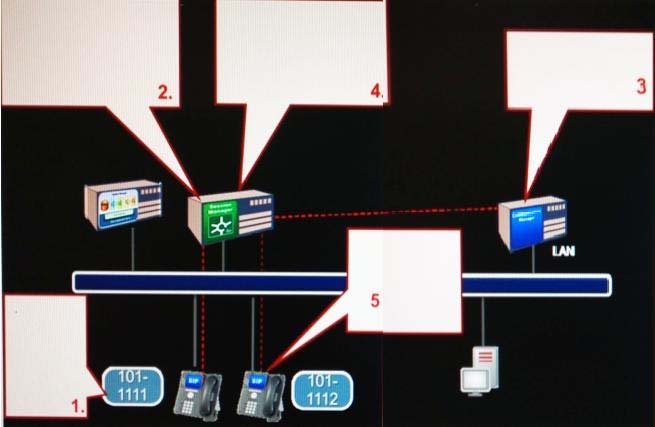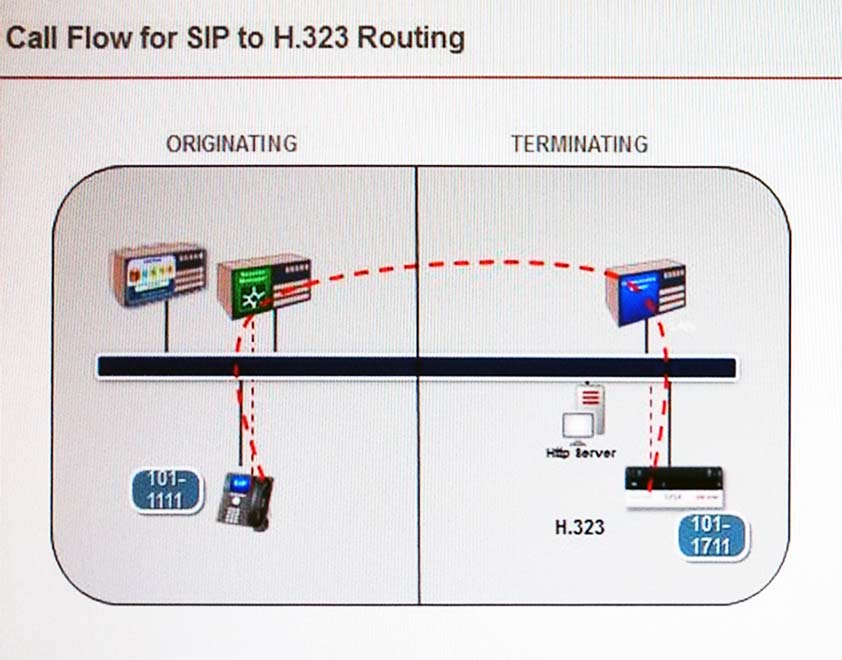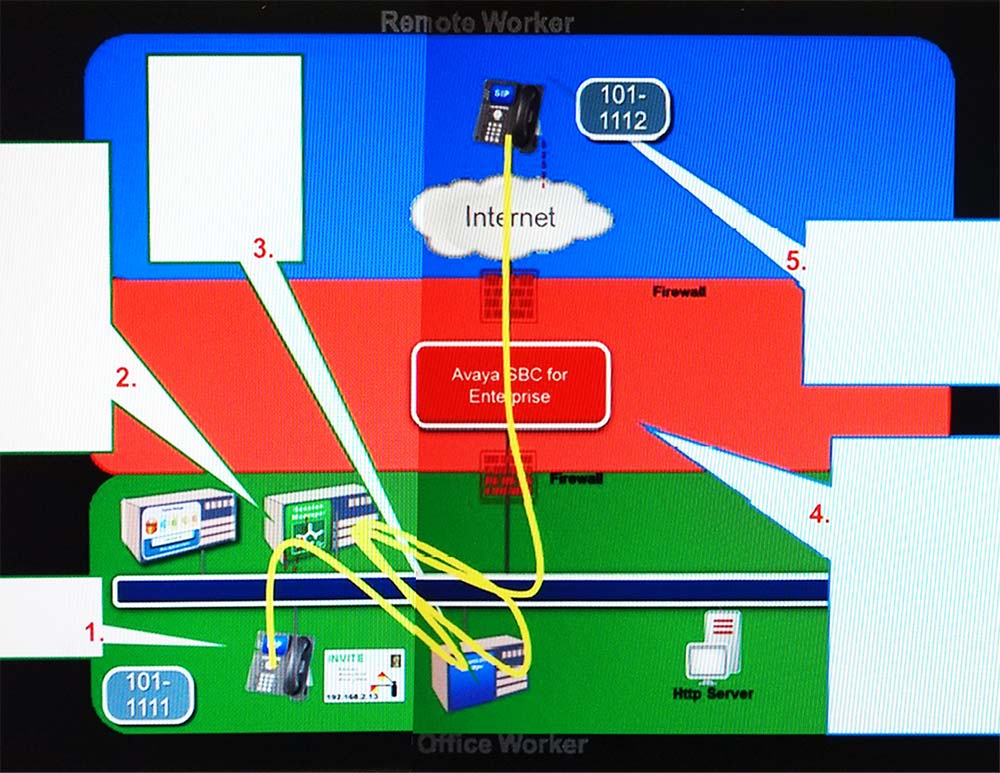Avaya 7220X Exam Practice Questions (P. 1)
- Full Access (77 questions)
- Six months of Premium Access
- Access to one million comments
- Seamless ChatGPT Integration
- Ability to download PDF files
- Anki Flashcard files for revision
- No Captcha & No AdSense
- Advanced Exam Configuration
Question #1
Refer to the Exhibit.

Which two statements are true about a call from AST 1011111 to AST 1011112? (Choose two.)

Which two statements are true about a call from AST 1011111 to AST 1011112? (Choose two.)
- AIn step 3, Avaya Aura® Communication Manager (CM) sends SIP Options to 1011112 looking for a 200 ok response to check it is reachable.
- BIn step 2, Avaya Aura® Session Manager (SM) matches 1011111 with a Communication Profile, and uses the defined Originating Application Sequence to route the call to Avaya Aura ® Communication Manager.
- CIn step 1, when 1011111 draws dial tone it sends an Invite to Avaya Aura® Session Manager (SM) with the Request URI containing 1011111.
- DIn step 2, the Avaya Aura® Session Manager (SM) uses a dial pattern and routing policy to route the call to Avaya Aura® Communication Manager (CM).
Correct Answer:
BC
BC
send
light_mode
delete
Question #2
What statement about the H.323 to SIP routing is true?
- AAvaya Aura® Communication Manager does feature processing for both endpoints.
- BAvaya Aura® Communication Manager does feature processing for H.323 endpoint only.
- CAvaya Aura® Communication Manager does feature processing for SIP endpoint only.
- DAvaya Aura® Communication Manager does not do feature processing for any endpoint in this scenario.
Correct Answer:
A
A
send
light_mode
delete
Question #3
Refer to the Exhibit.

A SIP user is calling an H.323 user.
In this call flow, in which phase does Avaya Aura Communication Manager (CM) handle the call processing foe each endpoint?

A SIP user is calling an H.323 user.
In this call flow, in which phase does Avaya Aura Communication Manager (CM) handle the call processing foe each endpoint?
- Aboth endpoints in the originating phase
- BH.323 endpoint in originating phase, SIP endpoint in terminating phase
- CSIP endpoint on originating phase, H.323 endpoint in terminating phase
- Dboth endpoints in the terminating phase
Correct Answer:
C
C
send
light_mode
delete
Question #4
When retrieving a message from Avaya Aura® Messenger (AAM), what is the function of the RE-INVITE?
- AThe RE-INVITE is only used when the initial INVITE is not transmitted successfully.
- BThe RE-INVITE shuffles the media path off Avaya Aura® Communication Manager (CM).
- CThe RE-INVITE is to allow the user to be authenticated.
- DThe RE-INVITE is only sent if a voice port cannot be initially connected to the caller.
Correct Answer:
C
C
send
light_mode
delete
Question #5
Refer to the Exhibit.

Which two statements about a call from AST 1011111 to Remote Worker AST 1011112 are true? (Choose two.)

Which two statements about a call from AST 1011111 to Remote Worker AST 1011112 are true? (Choose two.)
- AAvaya Session Border Controller for Enterprise (SBCE) periodically sends SIP Options to 1011112 looking for a 200 ok response to check it is reachable.
- BSIP Signaling traverses the Avaya Session Border Controller for Enterprise (SBCE) and the Media must bypass the SBCE.
- CAs far as Avaya Aura Session Manager (SM) is concerned, all Remote Worker phones are registering from an IP address equal to the Avaya Session Border Controller for Enterprise (SBCE) Remote Worker Private IP address.
- DAvaya Session Border Controller for Enterprise (SBCE) needs to be built as a trusted SIP Entity and Entity link for remote workers.
- EThe configuration of a Remote Worker AST is the same as an Office Worker AST in the Avaya Aura® System Manager (SMGR) user profiles.
Correct Answer:
CE
CE
send
light_mode
delete
All Pages
